health
A problem in the water
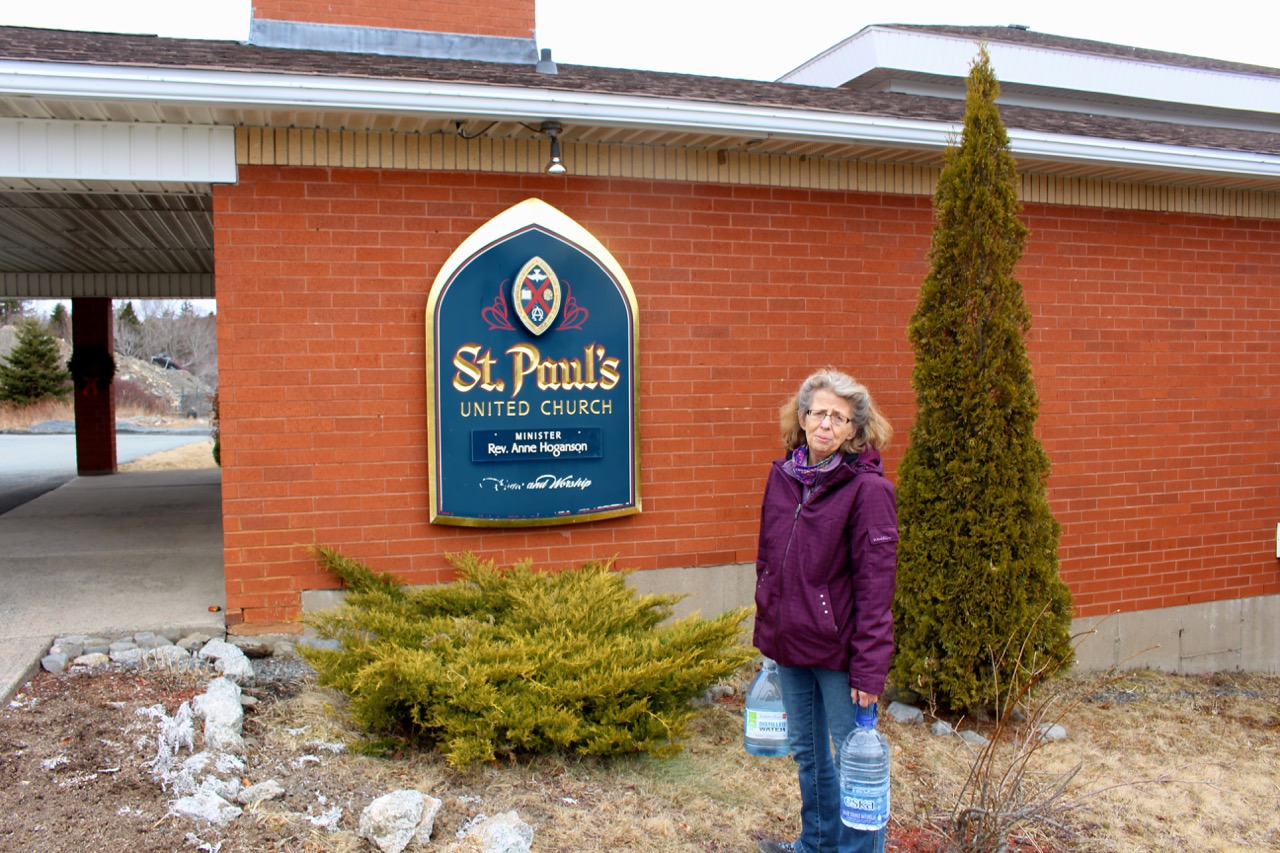
caption
Harrietsfield residents have been dealing with contaminated water for decades but there are new hopes for a cleanup
For Marlene Brown of Harrietsfield, it’s been a long wait for a cleanup of water contamination, and for justice.
For the past 15 years or more Brown has been living with contaminated drinking water in her well and the province’s inability to remedy the situation. It’s been a long haul.
“People are suffering in my neighbourhood, people are sick in my neighbourhood, animals have tumours in my neighbourhood,” she said. “I can’t get my head around the fact that people are suffering, animals are suffering, the environment is suffering.”
Harrietsfield is a rural community in Halifax Regional Municipality about 15 minutes drive west of metro Halifax, on the Chebucto Peninsula. Related stories
In June, the province announced that it is conducting an assessment that could finally lead to a cleanup. But that only came after years and years of attempts, including two ministerial orders, to have those deemed responsible for the mess fix it.
It all started in the late 90s when a recycling operation set up shop on land in the area.
Brown lives next to that site, which was operated by the now-closed RDM Recycling Limited. She said heavy metals and other chemicals leached into the underground well to which her home’s water supply is connected.
When she has a cold, Brown said she has to hold her breath in the shower because the fumes are so strong they hurt her lungs. She said residents who question the quality of their water drive to St. Paul’s United Church, near Spryfield, to fill up water jugs. In the summer an outdoor tap is open to residents 24 hours a day and in the winter they use an inside tap that’s open from 9 a.m. to 3 p.m., Tuesday to Friday.
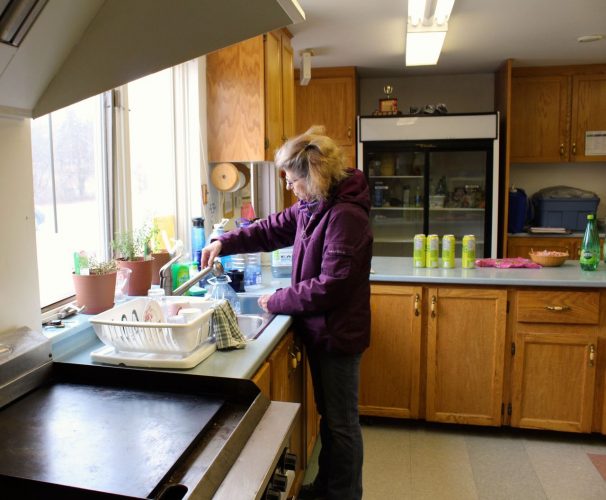
caption
Brown said she usually goes to the church once a week to fill up four water jugs.Brown’s not the only one with contaminated water; 18 other homes in Harrietsfield were put on a water monitoring program in 2003 by the province. In 2015, the monitoring program was stopped, so for the past three years she’s had no idea what’s in her water.
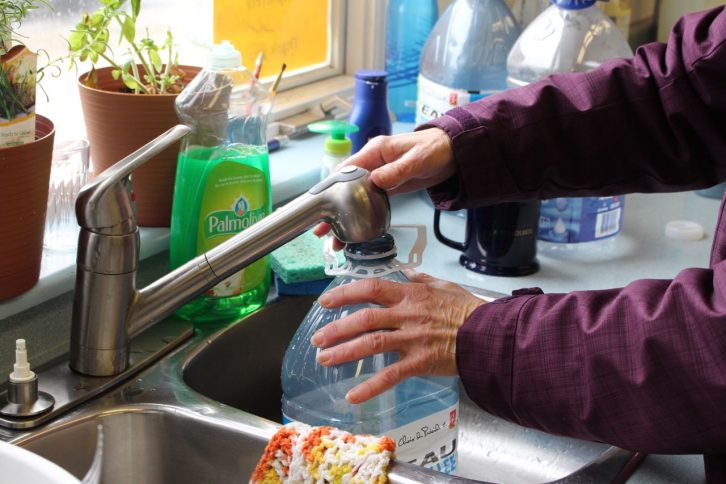
caption
Harrietsfield residents walk through the food bank at St. Paul’s to access the indoor kitchen sink.Debbie Kelly, another Harrietsfield resident who lives about 200 metres from the recycling site, has an autoimmune disease she said is made worse by the contaminated water.
“I was noticing the brain fog and just cognitive deficits that I was having from the past, so stopped drinking my water after Marlene shared with me results of the water contamination,” said Kelly.
Kelly believes the air could also be contaminated because of material still sitting at the site.
“My grandchildren live next door and they even say ‘what stinks nanny?’ and that nauseates me,” she said.
Fellow Harrietsfield resident Ray Davis moved to the area in 2004. At first the water seemed fine, but then his cat started getting sick.
“We used to let her out all the time and any time it rained she would eat the grass and drink the water,” he said. “We think that’s why she got sick, so now we don’t let her outside at all.”
Gary Brown lives on the same street as Kelly, Whitehead Road, and he said not being able to drink his tap water has been “tough.” Injuries to both his shoulders forced him to retire a year early, so he has problems carrying cases of water bought at Sobeys or filling up jugs at St. Paul’s.
He said the response from the province so far has been “just words.”
Marlene Brown said people in Harrietsfield have had several meetings with the Nova Scotia Department of the Environment, but feels “they don’t care.” Kelly agreed with this sentiment.
“I think it’s neglect and ignorance … I’m breathing in this stuff; I’m bathing in it,” Kelly said.
Nova Scotia Environment issued a ministerial order to two numbered companies, 3012334 Nova Scotia Limited and 3076525 NSL in 2010, and the former owners of the company to clean up the former RDM recycling facility at 1275 Old Sambro Rd. The cost to remediate the land is estimated at around $10 million.
The first ministerial order outlines 10 actions the companies were supposed to take to deal with the contamination in Harrietsfield. Among the items, it required the companies to submit a mitigation plan for both uranium and lead in the wells, monitor the water quality and submit a remedial action plan to the department. Brown said this decision gave her hope but by 2016, when another order was issued, nothing had been done.
Brown became so tired of the provincial government’s inaction that she decided to take the polluters to court herself, launching the province’s first private prosecution of the Environment Act in the spring of 2017. She took Roy Brown (no relation to Marlene Brown) and Michael Lawrence, the original owners of RDM., and the two numbered companies, to court.
The Timeline
Contaminated water in Harrietsfield has been an issue for decades and started well before Brown noticed something was wrong. She said mining exploration in the area during the 1970s worsened naturally occurring uranium contamination. A court order from 1981 told residents to stop drinking well water and the former city of Halifax started delivering drinking water to residents. However, the water delivery program ended in 1990.
In 1994 a Municipal Planning Strategy report recommended creating a Wastewater Management District in Harrietsfield, remediating the uranium in wells and transferring the community to city water. Despite being something that would have resolved issues at the time, residents voted against the plan.
The planning report also details a pollution control study the municipality undertook. The study was to examine the impact of uranium in the drinking water, but the Department of the Environment changed the recommended level of uranium in drinking water at the time. It was raised from 0.02 miligrams per liter to 0.1 miligrams per liter.
According to the report, “with this change in the recommended level, there was no longer a widespread incidence of wells exceeding the acceptable concentration.”
In the late 1990s, partners Roy Brown and Lawrence started RDM Recycling Ltd.
The saga is laid out in detail in court documents related to the two ministerial cleanup orders.
RDM Recycling Ltd. bought the former automotive salvage yard in 1997, and while it waited for the necessary approvals for disposal, began stockpiling construction waste on the site, including gyproc, carpeting, old tires and appliances.
Approval from the Halifax Regional Municipality came in March 2003 to recycle 120,000 tones of material, but the company never got an approval from the province to begin operations.
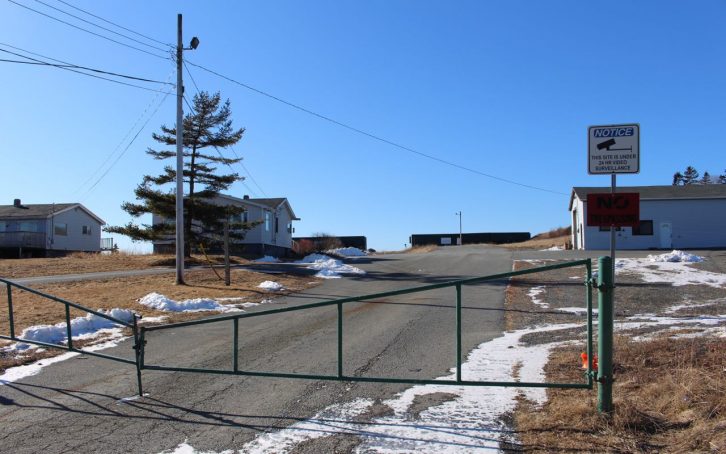
caption
Signs for the former recycling business have been taken down at 1275 Old Sambro Rd.Investigations conducted in the early 2000s as part of the company’s application to the province determined rainwater that drained through the waste, was threatening nearby wells. The province turned down the application and asked the company to submit a “remedial action plan.” That plan, later approved, allowed RDM to build a specialized “containment cell” to hold about 120,000 tonnes of the stockpiled material, according to the court documents.
Continued monitoring showed “no appreciable decline in contaminants” and in 2005, a numbered company called 3076525 Nova Scotia Ltd. purchased all the assets of RDM, except the land. That was only only leased from the previous operators and even today the original RDM Recyling Ltd., long defunct, is the registered owner of the property.
The new operator stopped stockpiling waste, and instead stored it on site for about 30 days at a time before transferring it elsewhere.
Meantime, the water problems persisted.
Fast forward to 2010, the province issued the first ministerial order.
“The Minister of the Environment believes on reasonable and probable grounds that the persons named in this Ministerial Order have contravened the Environment Act,” the order said.
2010 Ministerial Order:
The then current operators, 307 NSL, appealed the order, which led to further discussions with the province to come up with a solution. Those failing, the appeal went forward, but except for one provision in the ten-part order, the court upheld it.
The province rescinded the original order, and in 2016 issued two new ministerial orders, one against the original operators and one against 307.
2016 Ministerial Orders:
Except for the provision previously struck down, these were essentially the same as the original order. This time, both 307 and the original operators appealed, but in separate decisions, the supreme court rejected both of those appeals.
The water problems have never been resolved.
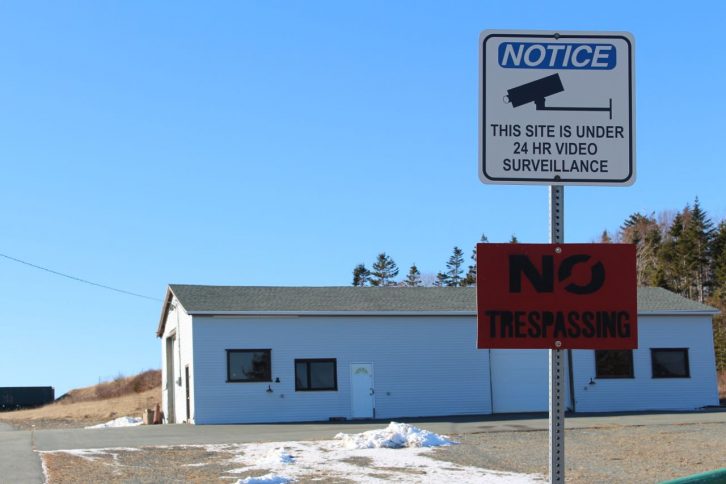
caption
In 2005, 307 NSL started leasing the land from the original owners of RDM Recycling.Peter Lund, a hydrologist and former HRM councillor, was initially hired by Roy Brown to conduct an investigation and examine the source of the pollution in the contaminated wells. Lund said he believes the contamination source might not be from the RDM site, but instead be due to the uranium already present in Harrietsfield groundwater.
“Everyone talks about six to eight wells that are contaminated from the site and I conclude that’s not the case,” he said. “There’s only one well that’s definitely impacted from the site and there might be two.”
Lund came to this conclusion after looking at data on contaminants in the water and groundwater patterns in the area. He said it is also possible that lead and other chemicals present in residents’ wells is natural. He sent his findings to Nova Scotia Environment in May 2017, but did not receive a response.
“A lot of people are drinking the water when they shouldn’t be, and they don’t know the water’s contaminated from natural conditions,” he said.
Lund is now working pro-bono because he wants to see the case to its end.
“I just want to see this thing through the end and clear Roy’s name,” he said.
Private prosecution
In the summer of 2017 Brown decided to take 301 NSL, 307 NSL and Roy Brown to court in a private prosecution of the Environment Act, a first for Nova Scotia. According to court documents, Brown laid 45 charges under the Act. After the pretrial process, where Brown had to show she had enough evidence for the case to go forward, the provincial public prosecutor laid their own charges. The prosecutor took over the case on July 25, 2017.
The charges against the numbered companies and Roy Brown are still allegations and have not been proven in court.
Brynn Langill, manager of communications for the Liberal Caucus office, said the provincial government could not comment on the specifics of the case while it is before the courts.
The fact the public prosecution service took over the case shows that private prosecutions of the Environment Act in Nova Scotia are possible, says Jamie Simpson, Marlene Brown’s lawyer.
“It was definitely a question to see how a judge would react to a private prosecution brought forward under something other than the Criminal Code,” he said. “That was a bit of an open question, and we also wanted to see how the public prosecutor would react.”
Simpson said there is a mechanism in private prosecutions by which the province could have ended the case, but in Brown’s case this didn’t happen. He said this shows a private prosecution could be an option for others who feel the government isn’t holding polluters accountable.
When the public prosecutor took over the case Brown said she didn’t feel that it was a win, but that she could focus on getting the HRM to extend city water to Harrietsfield. If this happened, “the community would thrive”, she said.
“They would be so happy.”
Brian Casey, the lawyer representing 307 NSL, said the company maintains that the previous owners of the business, the now-defunct 301, was responsible for the pollution, not his client.
“We didn’t come on to the site until after the problem was already there, unknown to us, and we didn’t do anything to make it worse.”
Michael Levin, lawyer for Roy Brown, said discussions are ongoing on a possible settlement of the case, which has been adjourned numerous times, the latest to September 6. So far, he said, the talks have not yielded anything that satisfies all of the parties.
“From Mr. Brown’s perspective, it would be nice to the charges totally dropped, it would be nice to see them stayed,” he said.
“He has maintained his innocence in this process for a long time.”
Casey is hoping for a guilty plea by 301.
“The problem is they don’t have a director, they don’t have any officers; they have been defunct for a while, so I am not sure that is going to happen.”
Amy Lawrence, daughter of the now deceased Michael Lawrence, said the family would be “leaving it to the courts.”
Problems with enforcement”
Issues with Nova Scotia’s environmental enforcement regime aren’t new. In June 2014, East Coast Environmental Law wrote a report, titled Failure to Enforce, on the provincial government’s failure to properly enforce Nova Scotia environmental law. The report states that for every 500 compliance inspections done by provincial inspectors, only one charge gets laid. The majority of fines issued by Nova Scotia Environment inspectors, over 50 per cent, result in a less than $500 ticket, according to the report.
Lisa Mitchell, director of East Coast Environmental Law, said part of the problem in recent years is Nova Scotia Environment inspectors became responsible for enforcing all kinds of violations, not just environmental ones. In June 2014 inspectors from the departments of Natural Resources, Health and Wellness, Fisheries and Aquaculture and Agriculture were consolidated into the Environmental Health and Food Safety, a division of Nova Scotia Environment. This means the department’s inspectors became responsible for enforcing violations under food safety, public health, meat inspection, animal welfare, along with the Environment Act.
“I think it put a lot of stress on the resources of Nova Scotia Environment because their staff were responsible for more areas that they had to become experts in,” said Mitchell. “I think it’s fair to say they didn’t get all that they needed to do a robust job. So there would be some stress on the organization just learning that new mandate for all the pieces of legislation.”
The department’s website says the province employs 60 compliance inspectors who perform 18,000 inspections and investigations each year. Unlike in a police investigation, a search warrant is not required for an environmental inspection and can be done on an ad-hoc basis. Individuals can also make complaints, according to the department’s website, in which case an investigation will take place if Nova Scotia Environment deems there to be enough evidence. Emission limits are outlined in a company’s industrial approval, which governs the requirements for a business’ industrial operation. The approvals are searchable in an online provincial database.
Mark Butler, policy director at the Ecology Action Centre, has seen instances where environment inspectors are reluctant to enforce regulations, especially in rural areas.
“In rural Nova Scotia there’s not a lot of economic activity,” he said. “There’s probably an incentive not to rock the boat … but people are complaining more and more about that.”
He said recent attention around Northern Pulp, a pulp and paper mill in Pictou County, is an example of this. The mill violated air emission limits in summer 2016 and was given a summary offence ticket for around $700. The province later retracted the fine citing “technical difficulties” with the test. In October 2017 the mill violated air quality standards again and received another ticket for $700. This comes while environmental activists and fishermen in the county voice their concern about the mill’s proposal to dump effluent into Northumberland Strait, between Nova Scotia and Prince Edward Island.
Butler said polluters will step into line if they see the provincial government taking a hard line and properly enforcing regulations.
“You also get compliance through targeting polluters and polluters who don’t obey the rules, if you don’t enforce the rules then everybody will be like ‘well I can get away with it,'” he said.
Map: Longform Prosecutions in Nova Scotia from 2009 to 2018
View larger map
How the province handles enforcement
The Nova Scotia Summary Offence Ticket Booklet lists 38 pages of possible tickets for violating the Environment Act or regulations under the Act. The out of court settlement, pleading guilty and paying the fine up front, is under $1,000 for the majority of offences. One exception listed in the booklet is when the accused knowingly contravenes the Act, which can result in a fine of over $1,000.
Simpson, Brown’s lawyer, said in some cases fines represent a “cost of doing business” and companies have been able to pay the fine without really changing their behaviour. For some violations, he said the fines should be higher as a general deterrent.
“By imposing a fine that will be more than just the cost of doing business, it will send the message to other companies that ‘hey, maybe we should make sure we don’t do these things in the first place so we don’t find ourselves in the same situations,’” he said.
Simpson said fines are one of the more seriouss action Nova Scotia Environment can take to ensure compliance with the Environment Act and is the last step in the enforcement process. He said the first thing an inspector can do is to issue a directive, which could require a company’s employees to release certain information or take action to comply with the law. If a company doesn’t comply after a directive is made, the minister can issue an order.
Map: Ministerial Orders issued in Nova Scotia from 2009 to 2017
Joel Corcoran, manager of compliance and enforcement at Nova Scotia Environment, said the decision regarding enforcement action largely rests with the department’s environmental inspectors, who are special constables appointed by the Minister of Justice. If a violation is found, the inspector decides what type of punishment or action is needed.
He said there are two levels of action the department can take with offenders, compliance action or enforcement action. Compliance actions are generally less serious and are meant to get the offender to fix the problem. They include measures such as education, directives, or ministerial orders. If the offender doesn’t fix the issue quickly, enforcement actions are meant to punish and compel them back into compliance. These include summary offense tickets, long-form prosecutions, or cancelling an industrial approval. If an approval is cancelled, Corcoran said it effectively shuts down the offender. While inspectors can issue most types of action, a ministerial order or cancelling an approval can only be done by the Minister of the Environment.
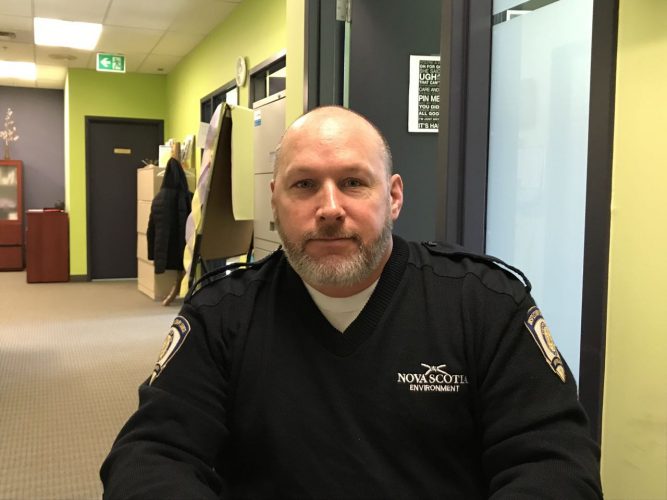
caption
Corcoran said compliance inspectors have discretion on what action to take against violators.Ministerial orders, like the two issued to 301 NSL and 307 NSL, fall under compliance actions, the less-serious category of possible actions.
“With a provincial court action that inspector is the one who has to swear out an information to the (Justice of the Peace),” he said. “So they have to believe that an offence occurred because they’re going to be the ones testifying about it.
Corcoran said inspectors take into account a company’s willingness to comply when deciding on what action to take. This depends on whether a company tried to hide a violation and how quickly they moved to solve the problem.
“It really kind of lays out whether we’re going to encourage them and work with them via education or directive or what have you, or whether we’re going to go to compel,” he said.
Mitchell, the director of East Coast Environmental Law, said there are also problems with the public’s ability to access information around environmental violations. Section 10 of the Enviroment Act states the public will have access to an environmental registry that includes information about enforcement action taken by the government against violators, but this hasn’t happened yet.
“I was there when the Nova Scotia Environment Act was being passed in 1995,” Mitchell said. “We understood that that registry would be online, that people could easily access that info and wouldn’t have to go through an ([Freedom of Information) process, but that has never come to be.”
Currently, a list of Act violations isn’t available online and information has to be obtained through a formal freedom of information process, which can be time consuming and expensive. This is in contrast to the federal Department of Environment and Climate Change Canada, which maintains a list of successful prosecutions of the Canadian Environmental Protection Act online.
On Feb. 14, the department announced that an online directory of prosecuted offenses is coming, but did not announce a timeline. Chrissy Matheson, department spokesperson, said the decision was made to improve transparency and will “begin posting this information online in the coming months.” She said the department will let Nova Scotians know when the process begins.
Hiring an environmental prosecutor
Also, on Feb. 14, the provincial government announced it would be hiring an environmental prosecutor to prosecute offences under the Environment Act.
In a press release, Environment Minister Iain Rankin, said the decision was made to “ensure that companies and individuals are following the legislation in place to protect the environment and our health.”
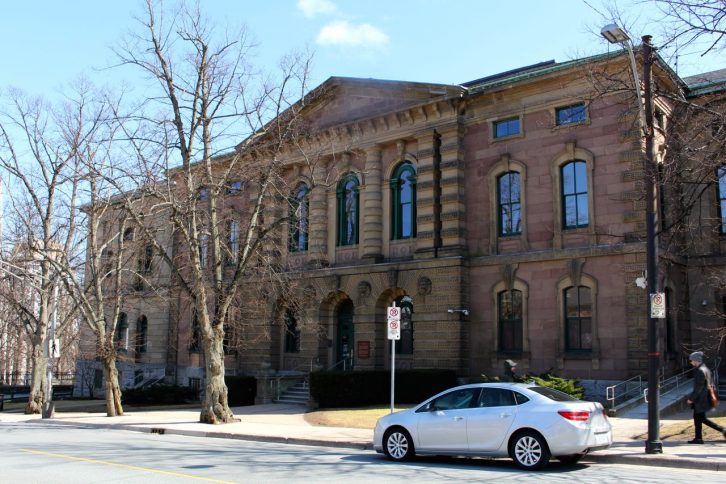
caption
The environmental prosecutor will prosecute offences ranging from the environment to food safety.Corcoran said part of the prosecutor’s role will be to train environment inspectors to better collect evidence that can be used in a trial.The budget for the prosecutor has not yet been determined, said Matheson.
Butler said having a dedicated environmental prosecutor means there will be someone in the Crown Attorney’s office with specific expertise who focuses solely on environmental issues. Corcoran said part of the current problem is that environment offences are just one part of a prosecutor’s job.
“They’re (currently) dealing with murder and sex assault and littering,” he said.
He said he doesn’t know whether the Harrietsfield case will be transferred to the new environmental prosecutor, or whether it will remain with the current Crown Attorney. That decision is up to the Public Prosecution Service. “More significant” cases will go directly to the environmental prosecutor in the future.
Butler applauded the creation of a new position but said responsibility still lies with Nova Scotia Environment and its prosecutors to enforce the laws and issue violations.
“The charges still need to be laid,” he said. “The investigations still need to happen, so if the (Department of the Environment) aren’t doing their job then there won’t be any business for the prosecutor’s office.”
A temporary measure
While the Harrietsfield case makes its way through the court system, the provincial government installed eight water filters in homes within community. The filters were installed in homes Nova Scotia Environment identified as being contaminated, despite the 2010 ministerial order listing a total of 19 properties for water quality monitoring.

caption
Eight properties have water filters installed, but some residents still don’t trust their tap water.Brendan Maguire, MLA for Halifax Atlantic, said the cost of each one was between $10,000 and $50,000, depending on what each well is contaminated with.
“I haven’t received any negative feedback from any of the individuals that have these systems,” he said. “Right now it looks to me like those systems are working or at least better than with what was in place.”
Brown said she agrees that filters are better than nothing, but still will not drink her water. She said the level of total dissolved solids in her water is still above the recommended limit.
Ray Davis, who lives right next door to the former recycling site, didn’t receive a water filter and said he has spent over $3,000 of his own money on buying a filter himself. He said the system he installed includes water softening and has a UV light to clean the water, but can only filter 20 liters at a time. The clean water comes out of a slender faucet to the left of Davis’ main sink.
“We thought being right next door to them (the province) would have done something for us … but no, nothing yet,” Davis said.
Maguire said it took around three years to get the provincial systems installed and was a long, frustrating process. This is not a final solution to the on-going problem in Harrietsfield, he said, and it is something he continues to work on.
“When I grew up in Harrietsfield, when I was a kid 35 years ago going to the elementary school, they were shipping water into that school and that was well before RDM,” he said.
“I’m just trying to find ways now to hopefully contain the site and hopefully the Crown will find a solution to that along with the offending companies.”
Maguire said part of the reason for the slow action on Harrietsfield could be because it is a low density area. If more people lived there the impact would be greater.
“My own personal feeling is I think that levels of government don’t want to move on it because they don’t want to be seen as the ones that are responsible for this,” Maguire said.
“I would love to see both levels of government step up because every day both had their hands involved in this. And I’d like to see both levels of government step up and remediate the site and then chase the offenders in court for the cost.”
The public prosecution case of 301 NSL and 307 NSL has been adjourned 13 times. The latest one was in June, and the case is scheduled back in court Sept. 6
The big news that has given everyone in the area hope came June 12 when then Environment Minister Iain Rankin announced that Nova Scotia Lands Inc. would undertake a $250,000 site assessment in Harrietsfield. The assessment is determining the extent of the contamination, how long remediation will take and its impact on exiting infrastructure and costs associated with the project. This is one of the actions the two companies were ordered by the province to complete in the 2016 Ministerial Order, but never did.
On August 1, the province issued a request for proposals for the assessment. Bids are due August 28.
Said Rankin in a news release, “This site has been a problem for the community for far too long. We’re taking an important and necessary action to address it.”
Marlene Brown, who has fought for so long for clean water, says this is a step in the right direction.
She is disappointed, however, by a Halifax Regional Council decision at the end of July not to include in its proposals for federal infrastructure funding the provision of city water to Harrietsfield.
“Sometimes it feels like we are moving two steps forward and one step back,” Marlene Brown said in an email to the Signal.
Regional staff said providing water service to the Harrietsfield area would conflict with development plans for the area, that the nearest service boundary was six kilometres away and that the province had the responsibility for the water problems in the community.
Residents will have to wait a while yet for a final resolution of their water woes.
Editor's Note
This story was completed in fulfillment of requirements in the King's MJ program. Most reporting was completed between January and April 2018; the story has been updated to account for subsequent developments.


W
Wayne Rhyno